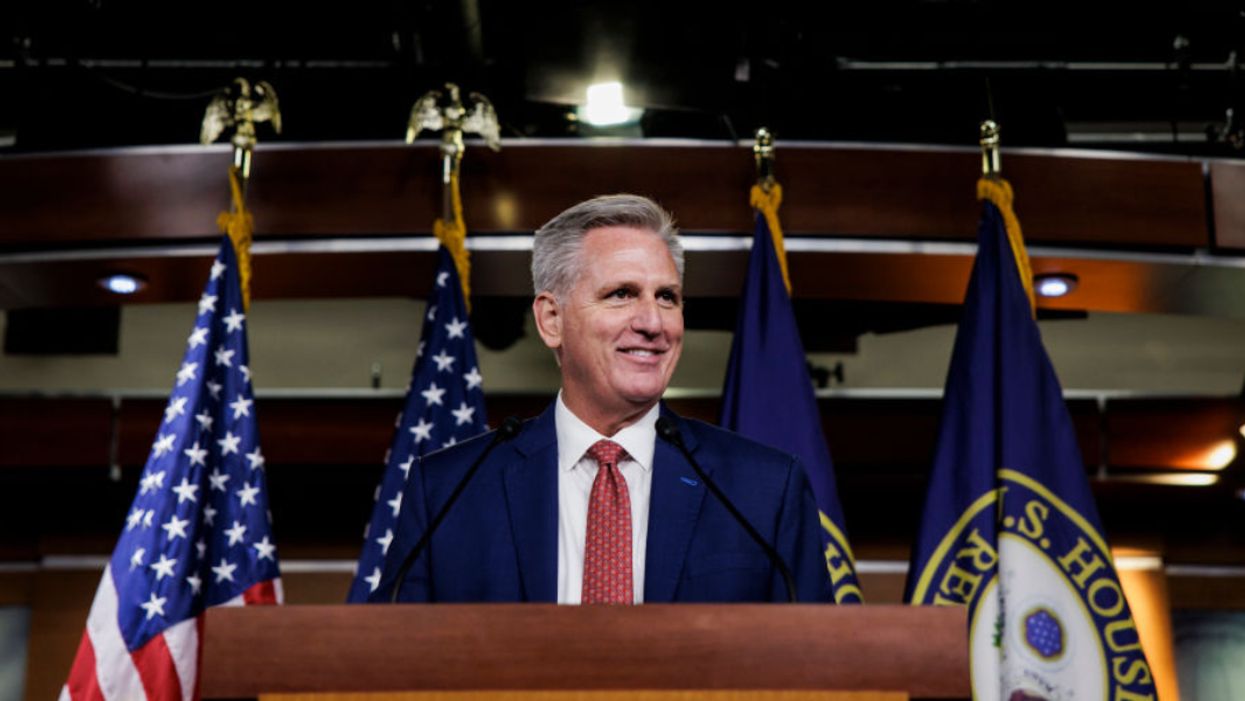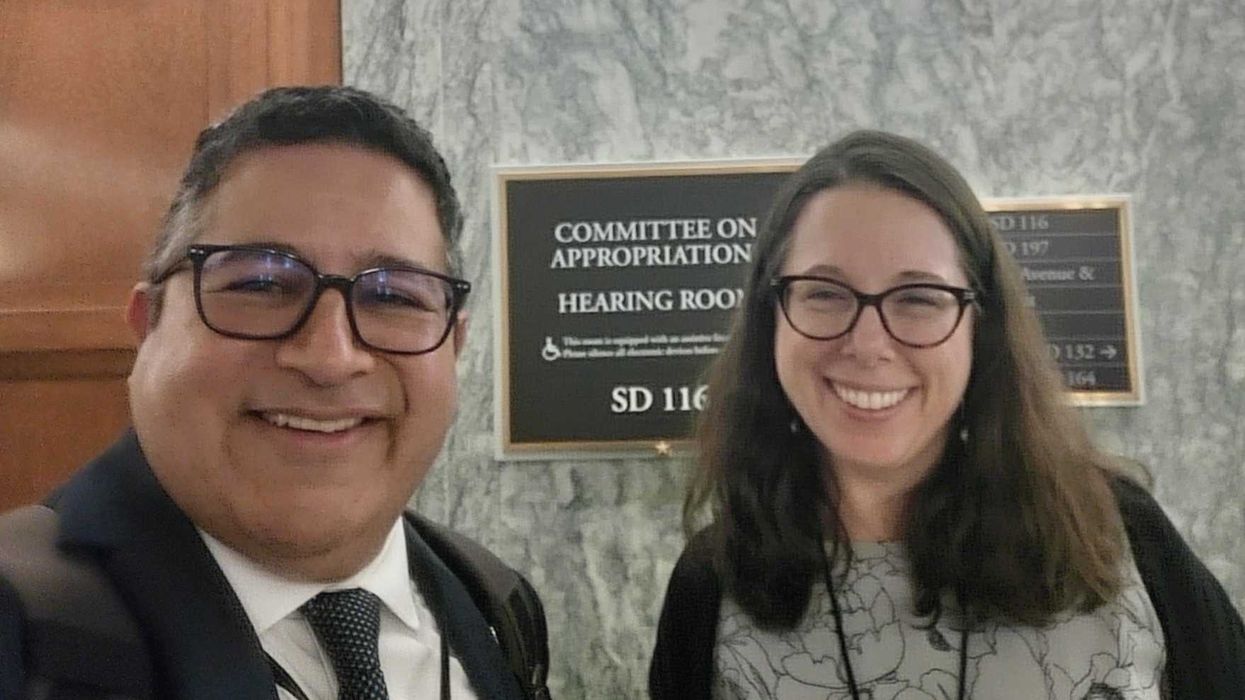Brand is a Distinguished Fellow in Law and Government at Penn State University.
Speaker of the House Kevin McCarthy is already facing the limits of his power. A single member of the House – from the far-right Freedom Caucus to a progressive on the far left, or any member in between – can threaten his speakership. And at least one Democrat already is promising to do just that.
The threat is to use a procedure – the motion to vacate the chair – which is a way of firing the speaker. Its power, though, is not necessarily that a member can successfully use it to oust McCarthy, but that it can be repeatedly used to stall his agenda.
The bind McCarthy finds himself in stems from his many concessions to win the speaker’s gavel and the new House rules that cement those concessions into place for the next two years.
But it’s not just the concessions we know about that could determine how McCarthy leads the chamber. As a law professor and former general counsel for the House, I believe McCarthy’s reported, but still secret, side deals could also influence his decisions on important committee assignments and what legislation the House prioritizes. That means deals that voters know nothing about could have an impact on legislation the House passes. Those bills could affect everything from a family’s taxes to the environment, schools and aid to Ukraine. McCarthy, though, has yet to confirm the terms of any secret deals.
The speaker still has a lot of power
Whoever holds the speaker position is second in the line of succession to the presidency and traditionally has been head of the majority party in the House. McCarthy came to the post the hard way. It took days of negotiating, lots of fighting by Republicans in the House and 15 rounds of voting before he received the gavel.
Yet, despite all the limitations that these new rules place on him, McCarthy remains the highest-ranking leader in the House. He has administrative and personnel functions in addition to his legislative powers that include the authority to appoint lawyers and employees in the House Office of the Legislative Counsel. The office helps draft new bills, resolutions, amendments and more.
McCarthy also has control over office space on the House side of the Capitol and grounds through the House Office Building Commission. That control gives him leverage over the individual members and government agencies housed there. Plus, through the House Appropriations and Authorizing committees, he has oversight of the Capitol Police and numerous other legislative support agencies.
And, for as long as he is speaker, McCarthy controls House debate and procedure.
Gumming up the works?
Some of the new rules spawned by McCarthy’s concessions may appear to democratize the procedures for considering and passing legislation. But they are likely to make it difficult for members to get the working majority necessary to pass legislation.
That could make things such as raising the statutory debt ceiling, which is necessary to avert a government shutdown and financial crisis, and passing legislation to fund the government, difficult.
The new rules adopted by the House introduced some far-reaching revisions, such as requiring that federal spending remain at 2022 levels, permitting virtually unlimited floor amendments and requiring spending cuts to pay for new funding.
Allowing unlimited floor amendments gives every member the ability to seek to change legislation, potentially turning floor debates into dayslong marathons and permitting determined legislators to delay or scuttle effective legislative proposals.
This is not the first time a faction of members has revolted against the status quo. In 1910, a coalition of Democrat and Republican progressives used a majority to strip the speaker of his nonvoting membership on the Rules Committee, which decides how matters will be debated and has the power to determine when a measure is passed. The move allowed the members to curtail the speaker’s power.
And in 1975, the newly-elected “Watergate Babies, ” a group of lawmakers who came to power in the wake of the Watergate scandal, forced the replacement of three long-serving, powerful committee chairmen. This was an unprecedented usurpation of the traditional seniority system for committee chairmanship.
McCarthy’s reported side deals, like one that apparently puts three members of the Freedom Caucus on the Rules Committee, could empower these factional members to make good on their promise to rein in spending by possibly blocking efforts to raise the debt ceiling.
Remove the speaker, cut spending
Foremost among the changes that could render McCarthy less effective is the reinstitution of the “motion to vacate the Chair.”
Members used it in 2015 to force former Republican Speaker John Boehner from office. Democrats rescinded it in 2019 under former Speaker Nancy Pelosi, but it has been revived under McCarthy and, in its new iteration, gives a single member the power to put a vote on the floor to oust the speaker from the position.
Before McCarthy’s concessions, it required agreement by a majority of one party or the other to offer the motion. But now, even a Democratic member could make the motion to vacate, and if the entire Democratic caucus supports it, given the slim GOP margin in the House, only four Republicans would have to defect in order to fire McCarthy.
Another concession imposes a “cut go” rule requiring that any spending increases be offset with equal spending cuts. While this provision is motivated by the Freedom Caucus’ belief that the deficit is too large, it could pose intractable obstacles to passing emergency appropriations after natural disasters like hurricanes or wildfires.
Power over federal employees
The Rules Committee also revived the Holman rule, which allows the House to cut money from specific executive branch programs, even though they may have been previously authorized and funded. Using this rule, the House can reduce the salary or even fire specific federal employees, or cut specific programs, despite previous authorizations and appropriations.
Why these changes matter
While some of these new rules could be seen as providing greater House discipline, they also represent the potential for more inertia and mischief that may make it more difficult to legislate. If the House can’t reach an agreement on the debt ceiling as a result of that mischief, and the U.S. defaults on its debt, the consequences would be disastrous for the U.S. economy, the world economy and voters’ personal finances. Interest rates, then prices, would increase, leading to more inflation. Federal employees would not be paid. Even Social Security and Medicare would be at risk.
The dissidents have vociferously complained about the way Democrats ran the House – for example, bringing 4,000-page omnibus spending bills to the floor with little time for members to read and digest them. But they may be substituting a different species of dysfunction by empowering lone members to hold the chamber hostage with threats to remove McCarthy every time they encounter a legislative provision they don’t like.
Compounding McCarthy’s challenges is his party’s five-vote majority. As the country saw during the speaker fight, even a few defections can thrust the House into stalemate – and electing a speaker is arguably less difficult than other matters the chamber will handle.
This article originally appeared in The Conversation.


















